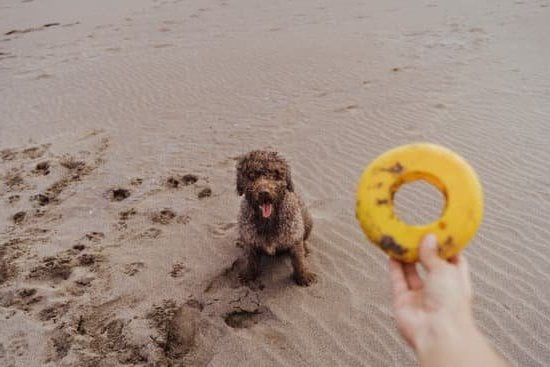Introduction
Fear and anxiety in rescue dogs can often be traced back to early learning experiences during their formative years. This is because rescue dogs may have been mistreated or neglected by previous owners, leading them to substantially reduce their trust in ‘strangers’ and be scared of new experiences. Communication, such as eye contact, can also cause fearful reactions if the dog has had a negative experience involving humans in the past.
Training Methodology: Creating a Positive Environment
The way we approach introducing the dog to its new environment plays an important role in determining its emotional wellbeing. A rescue dog should be introduced slightly differently from that of regular pet dog. When first bringing home a newly adopted rescue pup, try not to overwhelm it with attention or pressure; instead introduce them calmly and systematically into their new environment one step at a time. Things like walking around an unfamiliar area (e.g., a park), playing with other pets (if it is comfortable with this), and building trust through treats and toys are all excellent ways of creating an environment where the dog feels safe enough to come out of its shell.
Consistent Routine: Building Trust Over Time
Once the first steps are taken towards socialization, it is essential that the process continues in a consistent and structured manner. Providing treats intermittently throughout each session helps build positive associations with humans and reinforces trust between pet and owner. In addition, each experience should end with positive reinforcement—such as praise or cuddles—so that these encounters provide desirable outcomes for both parties involved. Over time these mutually beneficial experiences lead to forming strong bonds of loyalty between pet and person which overrides much of the fear & anxiety previously associated with humans by your rescue pup.
Gaining Trust
When training a rescue dog that is scared, the first step is to gain their trust. This can be difficult for dogs that are accustomed to unpredictable treatment, so it’s important to be patient and focus on providing consistent care in order to build an emotional bond. Before beginning any training, it’s essential to meet all of the dog’s emotional and physical needs, ranging from basic nutrition and sanitation to lots of love and affection. Spend as much quality time as possible with your new pup, such as taking them on periodic walks throughout the day or playing fetch so they can learn how to interact with people in a positive way. Additionally, designate safe spots in your home where the dog can retreat if they ever become overwhelmed. By fulfilling their emotional and physical needs yourself and offering gentle reassurance when your pup is scared or anxious, you’ll gradually help them learn what it means to trust someone once again.
Exploring Comfort Zone
Training a scared rescue dog is a challenging but incredibly rewarding endeavor. It’s important to create a comfortable space for your rescue dog, free from their triggers so they can relax and adjust to their new environment. To do this, you must first identify these triggers – which may include loud noises, unfamiliar people or objects, or particular breeds of dogs. Once identified, it’s crucial to avoid exposing your pup to triggers in order for them to feel safe and protected.
When introducing new people or items into the environment, be sure to take it slow. If possible, allow your pup to meet strangers gradually in a calm and controlled atmosphere rather than all at once. If a strange person wants to greet your pup, have them sit down and offer treats before reaching out for interaction with the pup. You can also start by exposing your pup to unexpected stimuli at a distance that feels manageable for your rescue dog. Gently discouraging any fearful behavior with positive reinforcement such as praising good behavior or rewarding with treats when they stay relaxed will help desensitize them over time.
Above all else, it’s important that you remain patient throughout the process in order for your pup’s trust in you and others around them to develop properly. Letting your rescue dog explore their comfort zone on their own terms is vital because it gives them the opportunity to learn more about their environment without feeling threatened – reinforcing their trust in you as the caregiver too!
Offering Structure
Training a rescue dog that is scared can be difficult, however offering some structure in their environment can make the process much easier. Dogs benefit from a schedule and routine as it provides them with stability and an understanding of what will happen next. Sticking to a regular meal schedule, having set times for walks, playtime and bedtime, as well as creating rules within your home (such as no jumping up on people) helps ensure that the dog feels safe in their environment. Additionally, limit events or changes that may cause the dog additional stress. For example, if loud noises scare them, block out exterior noise with a white noise machine or use treats to interrupt the fear response when you’re out for a walk. Finally try to avoid reprimanding them harshly since it will only increase their anxiety. Positive reinforcement such as treats or praise works better in allowing your rescue pup to become more secure and confident over time.
Skilling Up
Training a rescue dog that is scared requires patience and consistency. The best way to do this is by teaching them behavior responses instead of focusing on their reactions. It is important to ensure that the dog has a quiet, comfortable, safe space to retreat to when feeling overwhelmed or scared. Gradually introduce the pup to new people and places while rewarding it with treats and praise whenever they engage in appropriate behavior. Use positive reinforcement techniques with essential commands like ‘sit’ and ‘stay’ so your pup will learn calm responses rather than fearful reactions. Socialize your pup in small doses until you are confident their behavior will remain consistent no matter the situation or environment. Establishing confidence in the dog gradually can help it build trust faster. Provide lots of toys for them to chew during stressful times to help keep them calm, but remove these items once they become bored so they do not turn destructive from chewing on furniture or carpeting. Finally, be sure to take your pup out for regular walks; providing an opportunity for networking with other dogs which can lead to further socialization. Combined with structured training, these efforts should help decrease fear in a rescued adult dog over time.
Replacing Fear
Training a rescue dog that is scared can be a daunting task. Fearful behaviors have survived because they have been rewarded in the past. So, if we are going to change fearful behavior, we need to replace it with something else that is rewarding for the dog. Fortunately, this can be achieved through positive reinforcement. Positive reinforcement means rewarding desirable behaviors with treats, toys or verbal praise when the dog does what you ask. This will increase the chances of the animal performing similar behavior in the future and will reduce fear by creating a pleasant environment to work in.
In order to start training a rescue dog who is scared, you must begin by taking things slowly and gradually build up the stimuli they encounter. Typically, moments where the dog feels relaxed should be heavily reinforced and given more attention than moments when they show signs of fear or anxiety. It’s also important to set realistic expectations throughout this process; remember that dogs take time to gain skills and confidence levels unlike humans who can pick them up quickly. Start by introducing commands like “sit” or “stay”, as these will help your dog learn obedience cues rather than generalize their fear through overgeneralizing bad experiences from trauma in their past. Once basic obedience has been established, try introducing distractions like other dogs or people while still taking it slow and considering how your dog responds – once they’re comfortable with those scenarios you can move onto introducing more complex scenarios such as being around loud noises or unknown territory where they may previously have experienced some trauma-related events.
Gradually increasing exposure levels at their own pace is key when trying to desensitize dogs with fearful behavior and create new associations where possible; an example would be associating certain places with rewards instead of fear so that future visits there result in expected calmness rather than uncertainty – building trust over time is extremely important during any sort of transformation process involving fear based learning situations! Finally, providing regular physical activity such as long walks/hikes or social playtime helps keep fears from resurfacing; if your pup feels tired from all the day’s events then chances are good that fearful trigger thresholds aren’t quite as reactive as when energy levels are high! With patience and consistent positive reinforcement, eventually you’ll see progress on even the most timid of pups!
Achieving Success
When training a rescue dog that is scared, it’s important to recognize progress and reward secure behaviors. Setting achievable goals that you and the dog can work towards is a good way to create momentum in your training. Start by introducing basic commands such as sit, stay, come and down. Of course, these will take time to learn due to fear but with patience and consistency they will achieve them eventually. Be sure to reward the dog each time they do something correctly or make a successful attempt at completing the command. This could be a treat, verbal praise or even physical contact like petting or tickles if they enjoy that sort of thing. As you continue to work together that confidence in their abilities will grow, ultimately leading them to develop more secure behaviors. Additionally, try not to be too hard on yourself if things don’t always go as planned – mistakes are part of the learning process both for you and your pup!
Conclusion
Training a rescue dog that is scared and untrusting of humans can be an intimidating challenge, but with the right methods, you can build a trusting bond with your pet. Praise, patience, and positive reinforcement are key ingredients in any successful training regime. Depending on your dog’s specific needs, it may require more time and mental stimulation than regular dog training, so consistency and repeated practice will be important. With consistent and appropriate methods of training and bonding, you’ll soon gain your dog’s trust — and have a loyal companion for years to come! Building this relationship between yourself and your rescue dog isn’t easy or instantaneous; however, with patience, understanding, persistency, and kindness – you will eventually develop mutual trust that will last for many years to come. Having the resilience to continue investing effort into building your bond with your rescue pup will be essential for lasting success.
In conclusion: Remember that training a fearful rescue animal takes substantial effort, commitment, investment of time, along with patience and understanding – but establishing this connection can change both you and your pet’s lives for the better. Keep up the good work by treating them kindly (self control is also important) in order to reap the rewards of having an affectionate companion who loves spending time around you!

Welcome to the blog! I am a professional dog trainer and have been working with dogs for many years. In this blog, I will be discussing various topics related to dog training, including tips, tricks, and advice. I hope you find this information helpful and informative. Thanks for reading!





